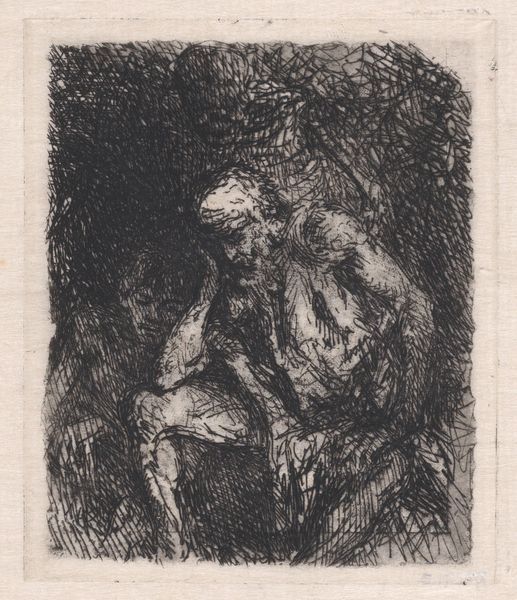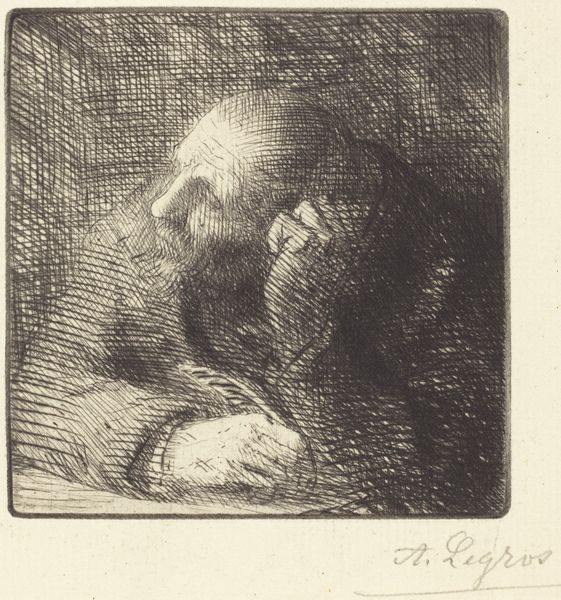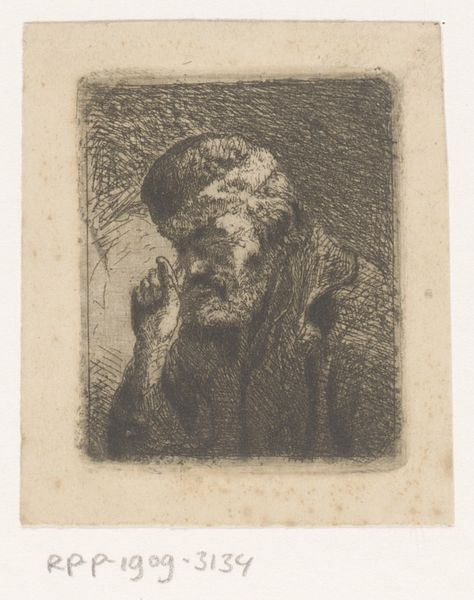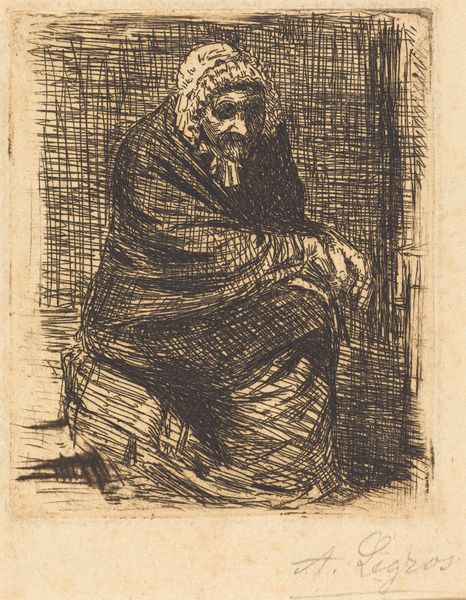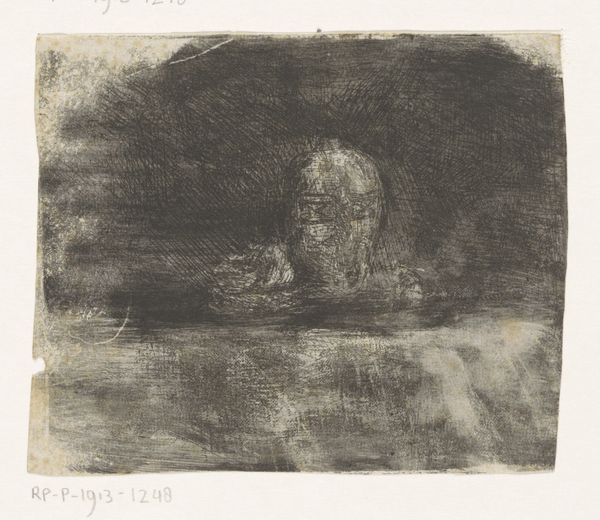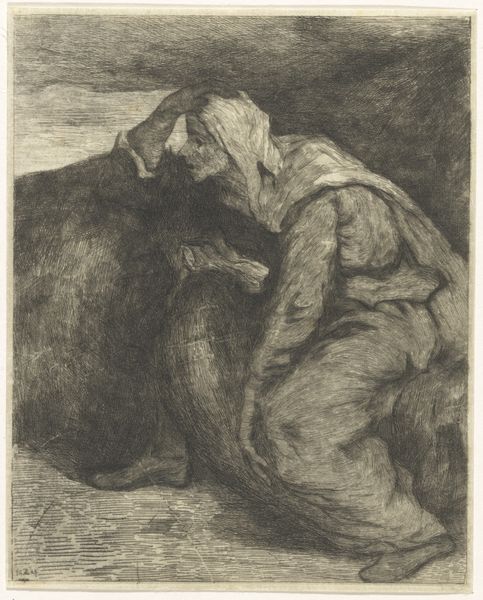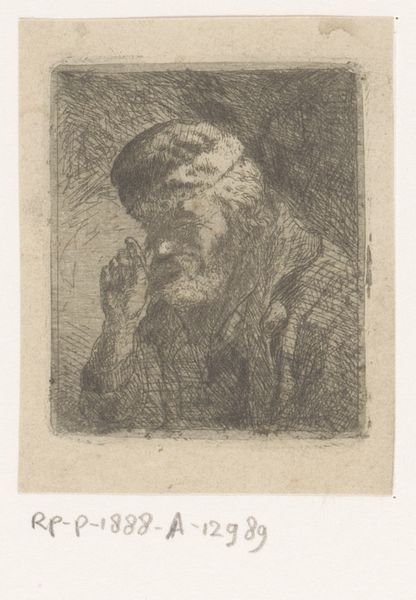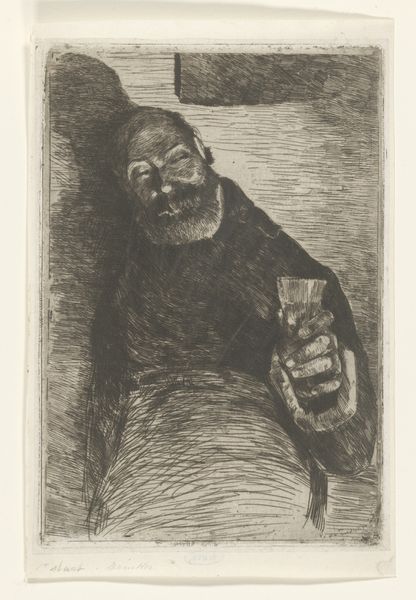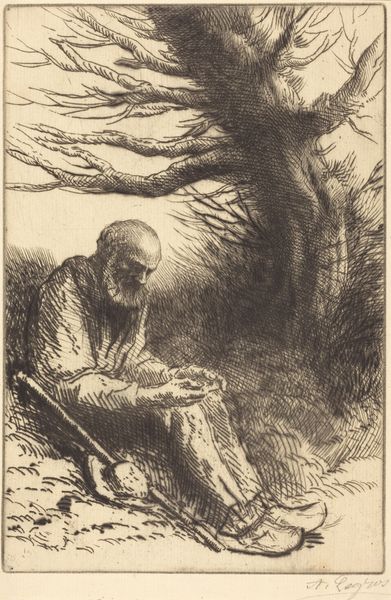
print, etching
#
portrait
# print
#
etching
#
figuration
#
pencil drawing
#
line
#
history-painting
Copyright: National Gallery of Art: CC0 1.0
Curator: Here we have Alphonse Legros' "Death and the Philosopher," rendered in etching. The subject, naturally, is in keeping with the title: an aged, bearded man writing while Death hovers behind. Editor: Immediately, the piece strikes me as incredibly stark. The high contrast and cross-hatching give it this ominous weight, this sense of dread hanging in the air. There’s a clear tension being presented. Curator: Yes, the dramatic contrasts draw immediate attention. Legros uses the etching process, through line and plate preparation to explore the relationship between darkness and illumination. Think of how the aquatint creates tonal range—what was Legros consuming while making this piece? Editor: True. The philosopher looks completely absorbed, seemingly oblivious, perhaps, to the figure of Death holding the lantern. His work keeps him focused, in a way removed from everything else. Given the subject matter, it does raise the question of who gets to contemplate life when the majority are consumed by basic survival. Curator: Well, etchings like these were typically reproduced for consumption by middle-class audiences. And beyond that, the work really allows you to appreciate how the etched line itself is built. Look at the figure's face. There is such care with layering lines to create the effect. Editor: I agree; that attention is critical here. It also reminds me how persistent, historically, the figure of the philosopher has been within the male artistic gaze. Legros doesn't fully deconstruct or reinvent any established trope of gender roles. What does this choice mean? Curator: Perhaps he's relying on well-known imagery to engage his contemporary audiences. Think of the relationship between production and intention, between studio work and market demand. Editor: True again; Legros doesn’t abandon all tropes or expectations. The print becomes interesting as a negotiation, showing that this discussion surrounding philosophical ideals cannot be considered outside the dynamics of production. Curator: A truly striking example of technique and tone coming together in service of social discourse, prompting reflection on both life and death, isn’t it? Editor: Exactly. Legros has certainly given us plenty to unpack on the complex dialogue surrounding not only existence, but also creation and viewership within our cultural context.
Comments
No comments
Be the first to comment and join the conversation on the ultimate creative platform.
